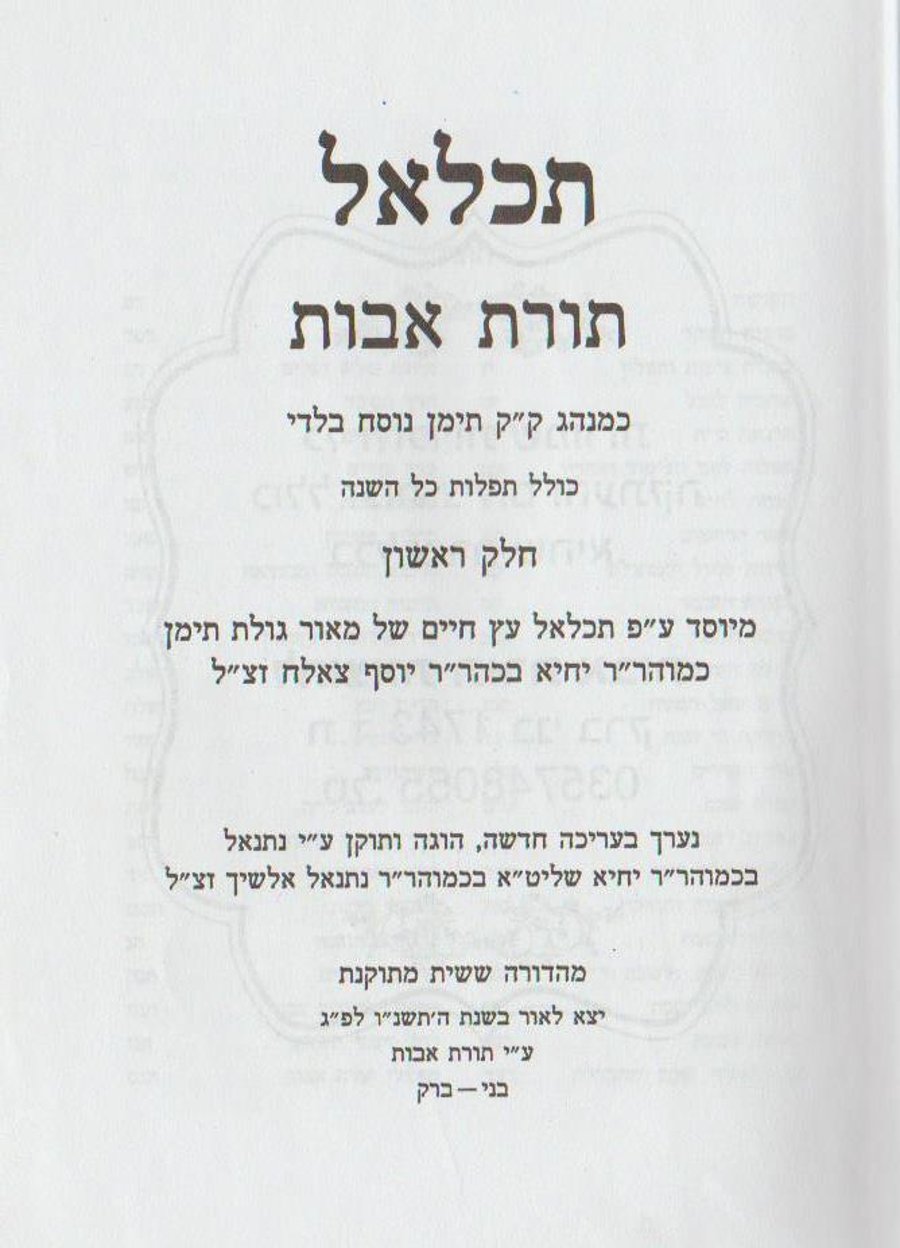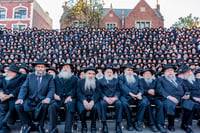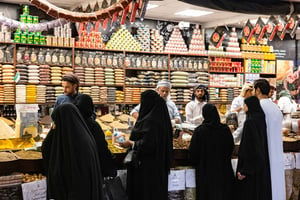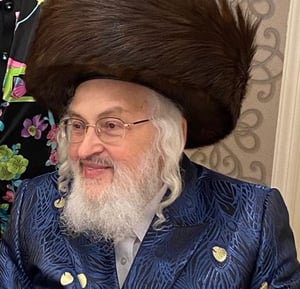
Siddurvery siddur gets the editor it deserves, and not every siddur has an introduction explaining the guiding principles, dilemmas, and editing decisions of its creator. The Tiklal [lit. “comprehensive” or “all-inclusive” siddur] Torat Avot, by contrast, was privileged to have both: a knowledgeable, erudite, and pedigreed editor, who did everything he could to produce a proper and correct prayer book, as well as an orderly and not too long introduction explaining how he made the siddur the way it was.
Torat Avot is a Yemenite Tiklal or siddur in the older Baladi nusach, whose first section – meant for the weekdays and Shabbat – was first published in 1996. Since then, the siddur has seen a number of additional and improved editions, as well as additional volumes, including the prayers said on fast days, holidays, and the High Holidays.
Unsurprisingly, and given the lack of user-friendly siddurim for Yemenite Jews, the siddur’s initial reception among communities was enthusiastic, and it became one of the most widespread siddurim of its kind over the years among those who pray in the Baladi nusach – this despite the unfortunate fact that unlike its predecessors, the Torat Avot siddur omitted the national prayers most congregants were used to saying.
The siddur’s editor, Rabbi Netanel Alsheikh, is the sons of Rabbi Yihya Alsheikh, one of the great Yemenite Rabbis of the Aliyah generation, who studied and taught at a number of shuls and yeshivahs in the capital city of Sanaa before 1949. One of the places he haunted was Kanis Beit Alsheikh – a synagogue bearing his family name, and whose nusach is considered by many to be well-established and accurate.
According to his own testimony, Alsheikh based his siddur primarily on the siddur published by Mori [teacher] Avraham al-Naddaf – one of the sages of Yemenite Jewry who made Aliyah at the end of the nineteenth century, and who based himself on the refined nusach of the Maharitz, Rabbi Yihya Salah. However, while preparing his own siddur, he had to decide what to do in cases where the popular custom did not align with what the authoritative siddurim said.
His introduction directly addresses this, in a way that might surprise readers: “And the rule I took is that a change which already occurred in Yemen and which most of the public already follow, I did comment on the difference between what is written in the tiklal and what is customary, but in the prayer arrangement, I arranged according to what is customary … and there is no harm to the honor of the earlier ones, as someone argued … I am not determining for anyone how to pray. Those who wish to do as is written here will do so, and those who wish to do in accordance with the ancient custom will do so, but in any event my view is not as those who claim that we need to return to the sources, as since it is customary, it is customary.”
However, despite his respect for popular custom, the editor is quick to stress that “if this custom was made new here [in Israel] I did not consider it … Furthermore, I did not consider customs followed mistakenly like versions of psukim.”
Aside from the dilemma between custom and text – which every editor likely deals with, implicitly or explicitly – Alsheikh also wondered about the siddur’s graphic design, while seeking to almost artificially fortify its identity as a religious prayer book.
He did so in contrast to other editors who sought to give their siddurim a more modern feel, which sometimes involved paying a serious price: “so as not to give the siddur the character of a modern book, but rather to stay as close as possible to the original, I did not multiply in commas and periods but rather only where it was needed. And in zemirot and other mizmorim that people tend to say together I almost did not punctuate, since a person can hear how to punctuate based on the tune of the public.” However, despite this aesthetic-linguistic decision – which can certainly be disputed – the siddur is largely designed in a clear, pleasant form which was unsurprisingly very well received by its target audience.
True, it has been over seventy years since most Yemenite Jews came to Israel, and they probably have an increasingly difficult time distinguishing between the older nusachs, to say nothing of the many layers of new, local or multi-community customs. But in the meantime, the Torat Avot siddur unquestionably reflects the accepted customs among many of Yemen’s Jews in Israel, as well as the constant question of whether and how to preserve the old and sanctify the new.
Dr. Reuven Gafni is a senior lecturer at the Land of Israel Department at Kinneret College. He specializes in the field of synagogues and religion in the Land of Israel in the modern era, and the relationship between Jewish religion, culture, and national identity in the Land of Israel.



















